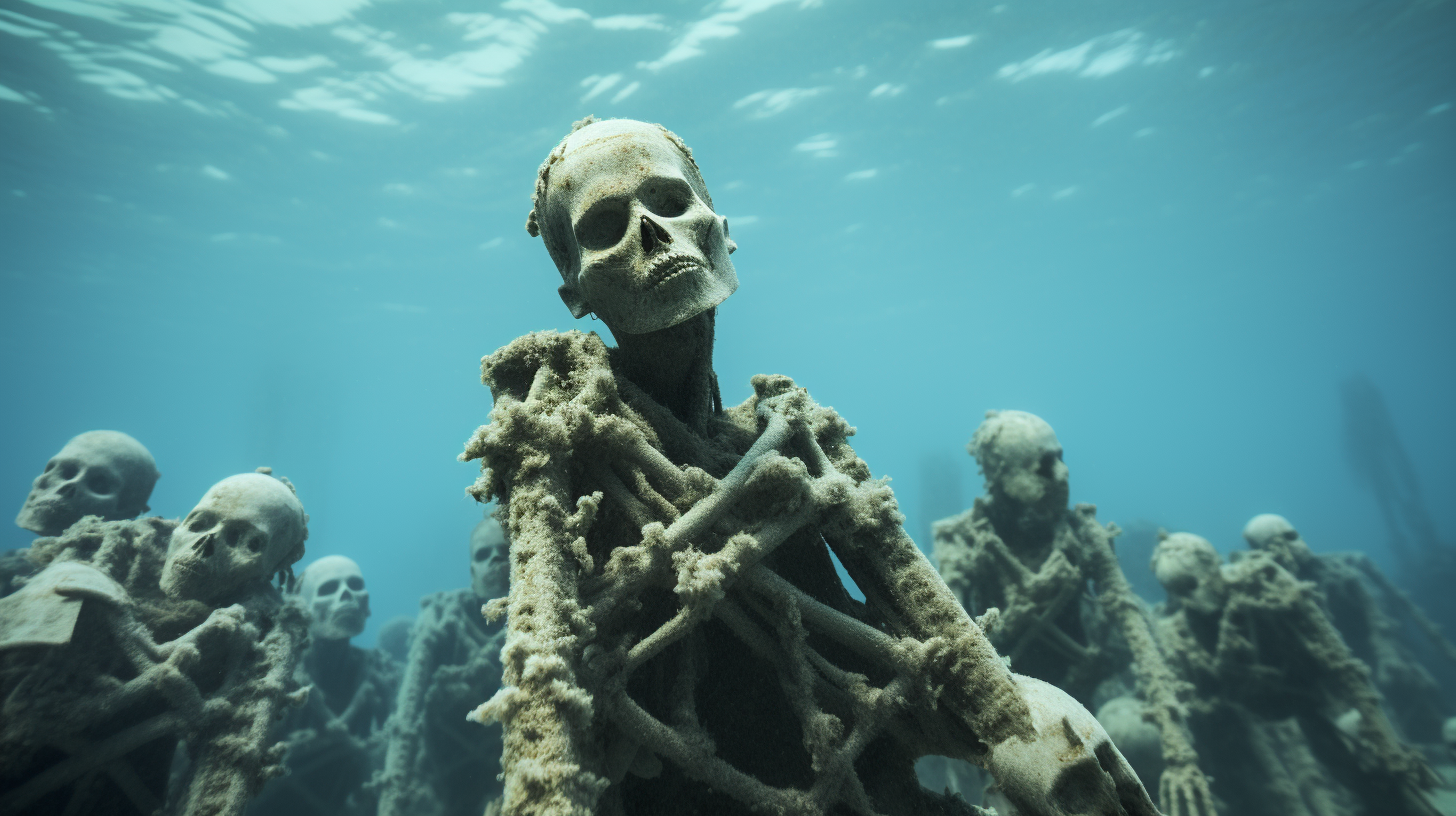In the cerulean depths, where waves no longer whisper secrets of marine magnificence, a silent symphony of sadness plays. The coral graveyards, vast and haunting, stretch across what used to be vibrant underwater landscapes. These skeletal remains of corals, once bursting with life and color, now lie lifeless and haunting, a stark contrast to the kaleidoscopic beauty they once displayed.
The ghosts we speak of aren’t ethereal apparitions but the anguished memories of an ecosystem ravaged by our negligence. Diving into this abyss, one cannot help but feel the weight of the water heavy with remorse. The marine life that once thrived here, a testament to nature’s brilliance, is nothing but fleeting shadows darting in the periphery of our consciousness.
‘To see is to believe,’ they say, yet witnessing the sheer scale of destruction beneath the tide compels us to disbelieve. In this dystopia we’ve authored, our disbelief is a coping mechanism, for comprehension carries the full brunt of our collective guilt.
Scientists told us of the devastation—of warming seas and acid assaults on calcium carbonate souls. Their cries echoed in academic journals and climate summits like prophecies unheeded. But now the evidence lies untouched before us, in a chilling stillness where the truth can no longer be debated, only mourned.
Explorers of this watery wasteland relay tales of despair. The Great Barrier Reef, dubbed the rainforest of the sea, has been stripped of its majesty. It’s a poignant juxtaposition: researchers document the decline while tourists flock to capture what little magic remains, storing pixels of a paradise lost for posterity.
Here, amid the rubble of the ocean floor, we find shadows of beauty—a lone anemone wavering in the current, a solitary clownfish seeking refuge where none can be found. Their resilience, moving; their future, uncertain.
The coral graveyards hold more than the tales of the sea; they are mirrors reflecting our own eventual demise. We built floating cities to escape the rising tides but neglected the truth that our fate is inextricably linked to the oceans’ health. As the marine ecosystems falter, so too does our hope of survival on the waterworld we’ve inherited. The ripple effect of this catastrophe is felt not just in the submerged wonders but also in the lives sustained by these waters, from fishermen who face stark livelihoods to nations facing climatic wrath.
In reading the stories of Ghosts in the Coral Graveyard, we partake in a ritual of remembrance, paying tribute to a world that will no longer be. We indulge in a fantasy that by bearing witness, we might absolve ourselves of the legacy we’ve sculpted. But the stark reality is, in our world, there are no heroes poised for redemption; there are only observers to the requiem.
Engage with this narrative, share in the lament for the marine marvel that was once the crown jewel of our planet. And as you do, entertain the solemn thought: in this great theater of loss, can there be any act more hopeful than defiance against the end—fighting for revival, not for us, but for the voiceless depths?
